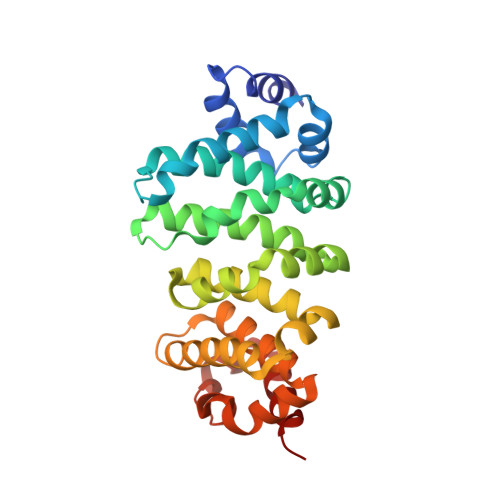Atomic model of human Rcd-1 reveals an armadillo-like-repeat protein with in vitro nucleic acid binding properties.
Garces, R.G., Gillon, W., Pai, E.F.(2007) Protein Sci 16: 176-188
- PubMed: 17189474
- DOI: https://doi.org/10.1110/ps.062600507
- Primary Citation of Related Structures:
2FV2 - PubMed Abstract:
Rcd-1, a protein highly conserved across eukaryotes, was initially identified as a factor essential for nitrogen starvation-invoked differentiation in fission yeast, and its Saccharomyces cerevisiae homolog, CAF40, has been identified as part of the CCR4-NOT transcription complex, where it interacts with the NOT1 protein. Mammalian homologs are involved in various cellular differentiation processes including retinoic acid-induced differentiation and hematopoetic cell development. Here, we present the 2.2 A X-ray structure of the highly conserved region of human Rcd-1 and investigate possible functional abilities of this and the full-length protein. The monomer is made up of six armadillo repeats forming a solvent-accessible, positively-charged cleft 21-22 A wide that, in contrast to other armadillo proteins, stays fully exposed in the dimer. Prompted by this finding, we established that Rcd-1 can bind to single- and double-stranded oligonucleotides in vitro with the affinity of G/C/T >> A. Mutation of an arginine residue within the cleft strongly reduced or abolished oligonucleotide binding. Rcd-1's ability to bind to nucleic acids, in addition to the previously reported protein-protein interaction with NOT1, suggests a new feature in Rcd-1's role in regulation of overall cellular differentiation processes.
- Department of Medical Biophysics, University of Toronto, Toronto, Ontario, Canada.
Organizational Affiliation:

















